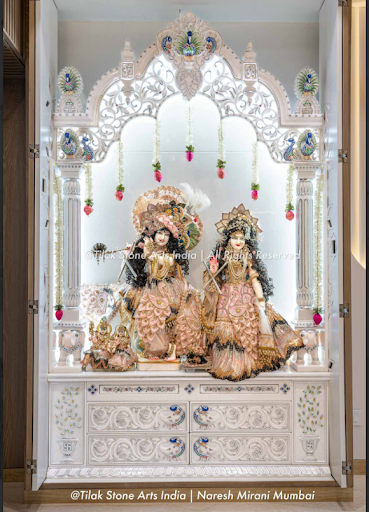The Art of Designing a Marble Pooja Room: Material Selection and Aesthetic Principles
A pooja room isn’t just another space in your home. It’s where you begin your day with prayers, seek peace after chaos, and connect with something larger than yourself. Yet many homeowners treat this sacred corner as an afterthought, squeezing it into leftover spaces with minimal planning.
The choice of marble for your pooja room shapes everything that follows. Walk into a poorly designed prayer space and you feel it instantly. The materials feel wrong. The proportions seem off. Your mind wanders instead of settling. A marble pooja room designed with care does the opposite. It draws you in and holds your attention without demanding it.
Material selection separates mediocre spaces from exceptional ones. Some homeowners assume all white marble looks identical. They learn otherwise when sunlight hits the surface differently or when intricate carvings reveal the stone’s true character. Vietnam White Marble has become the preferred choice for temple construction because of its fine-grained structure and pure white appearance. The stone allows for detailed carving work that other materials simply cannot match.
Why Material Quality Cannot Be Compromised
Your pooja room will exist for decades. Children will grow up seeing it daily. Guests will notice it when they visit. Cutting corners on material quality means living with regret every single day.
Poor quality marble develops yellowish patches within a few years. Veins that looked subtle in the showroom become prominent streaks across your deity’s backdrop. The stone chips easily during cleaning. These aren’t small inconveniences. They’re constant reminders of a decision you cannot easily undo.
The Vietnam White Marble maintains its pristine appearance across generations. The stone resists staining from incense, oil lamps, and daily worship materials. Its density prevents moisture absorption, which matters greatly in spaces where water and flowers are used regularly. Super Fine White Vietnam Marble takes this further with an almost translucent quality that transforms under proper lighting.
Design Principles That Actually Matter
Vastu compliance isn’t superstition dressed up as tradition. The principles behind temple placement have practical roots. Northeast corners receive specific morning light. East-facing arrangements catch the sunrise at angles that create natural illumination during early prayers.
But Vastu guidelines are starting points, not rigid rules. Your home’s architecture might not allow for textbook placement. Perhaps your northeast corner houses plumbing that cannot be relocated. Perhaps structural beams limit your options. Work within your constraints rather than forcing impractical solutions.
Proportion matters more than most people realise. A small pooja room doesn’t need a towering temple structure. The deity platform should allow comfortable sitting without making you crane your neck upward. Storage for prayer materials needs to stay within easy reach. These practical considerations often get ignored in favour of grand designs that look impressive but function poorly.
The Carving Question
Intricate carvings distinguish custom temple work from mass-produced alternatives. Traditional motifs like lotus patterns, kalash designs, and jaali work add cultural depth. They also increase cost and timeline considerably.
Here’s what most vendors won’t tell you upfront. Hand-carved details require skilled artisans who work slowly and deliberately. Machine-cut patterns deliver consistency but lack the subtle variations that make handcrafted work special. You’ll need to decide which matters more for your specific project.
Swiss White Marble responds exceptionally well to detailed carving work. The stone’s consistent grain means artisans can execute fine details without worrying about unexpected veining or weak spots. The pure white surface makes every carved shadow visible, creating depth through light play alone.
Lighting Transforms Everything
Most pooja rooms remain underlit. Homeowners install a single light source and wonder why the space feels flat. Layered lighting changes everything. A primary light for general illumination. Focused lights on the deities. Ambient lighting behind jaali panels or carved sections.
LED strips hidden behind architectural elements create a soft background glow. Small spotlights directed at carved details reveal craftsmanship that otherwise goes unnoticed. Dimmer controls let you adjust intensity based on time of day and prayer type.
Natural light deserves equal consideration during the design phase. A window or skylight positioned correctly reduces daytime electricity use while adding a connection to the outside world. Morning prayers under natural sunlight feel different from artificial lighting, though both have their place.
Materials Beyond the Main Structure
The temple structure draws attention, but surrounding elements complete the design. Flooring needs to complement without competing. Wall finishes should enhance rather than distract. Storage solutions must stay functional yet discreet.
For pooja rooms, designers often incorporate Wonder White Indian Marble for flooring when budget allocation requires it. Onyx stone makes occasional appearances as accent panels where translucency adds drama. Some projects blend different Italian marbles for decorative borders, though the main temple structure benefits from material consistency.
Ceiling treatments often get overlooked until late in the project. A simple geometric pattern or subtle dome design adds architectural interest without overwhelming the space. These elements cost relatively little compared to the main structure but contribute significantly to the overall feel.
Maintenance Realities
Every material requires upkeep. The question is how much effort you’re willing to invest long-term. Vietnam White Marble needs regular cleaning but resists most common worship-related stains. Avoid acidic cleaners that damage the surface finish. Soft cloths work better than abrasive scrubbers.
Oil lamps leave carbon deposits over time. These can be cleaned off with appropriate methods, but ignoring them lets stains set permanently. Fresh flower offerings sometimes leave pollen marks. Address these promptly rather than waiting for weekly cleaning sessions.
Periodic professional maintenance extends your pooja room’s life considerably. Specialists can restore polish, repair minor chips, and refresh carved details that accumulate grime in recessed areas. Budget for this ongoing care rather than treating it as an unexpected expense years later.
Making Decisions That Last
Your pooja room design should outlive trends. What looks contemporary today might feel dated within a decade. Classical proportions and traditional carving motifs remain appealing across generations. They also maintain resale value better than experimental designs.
Start by clarifying what matters most to you personally. Some families prioritise elaborate carving. Others want minimalist elegance. Neither approach is inherently superior. Your design should reflect your worship practices and aesthetic preferences rather than following someone else’s template.
Work with designers who understand temple aesthetics specifically. General interior designers often miss subtle details that matter in sacred spaces. Specialists trained in temple design bring knowledge about proportion, symbolism, and material selection that broader practitioners lack.
Creating a marble pooja room that serves your spiritual needs while elevating your home’s beauty requires patience and informed decision-making. The investment pays dividends daily through years of meaningful worship in a space designed with care and understanding.
Keep an eye for more latest news & updates on The Knowledge Arrow!


